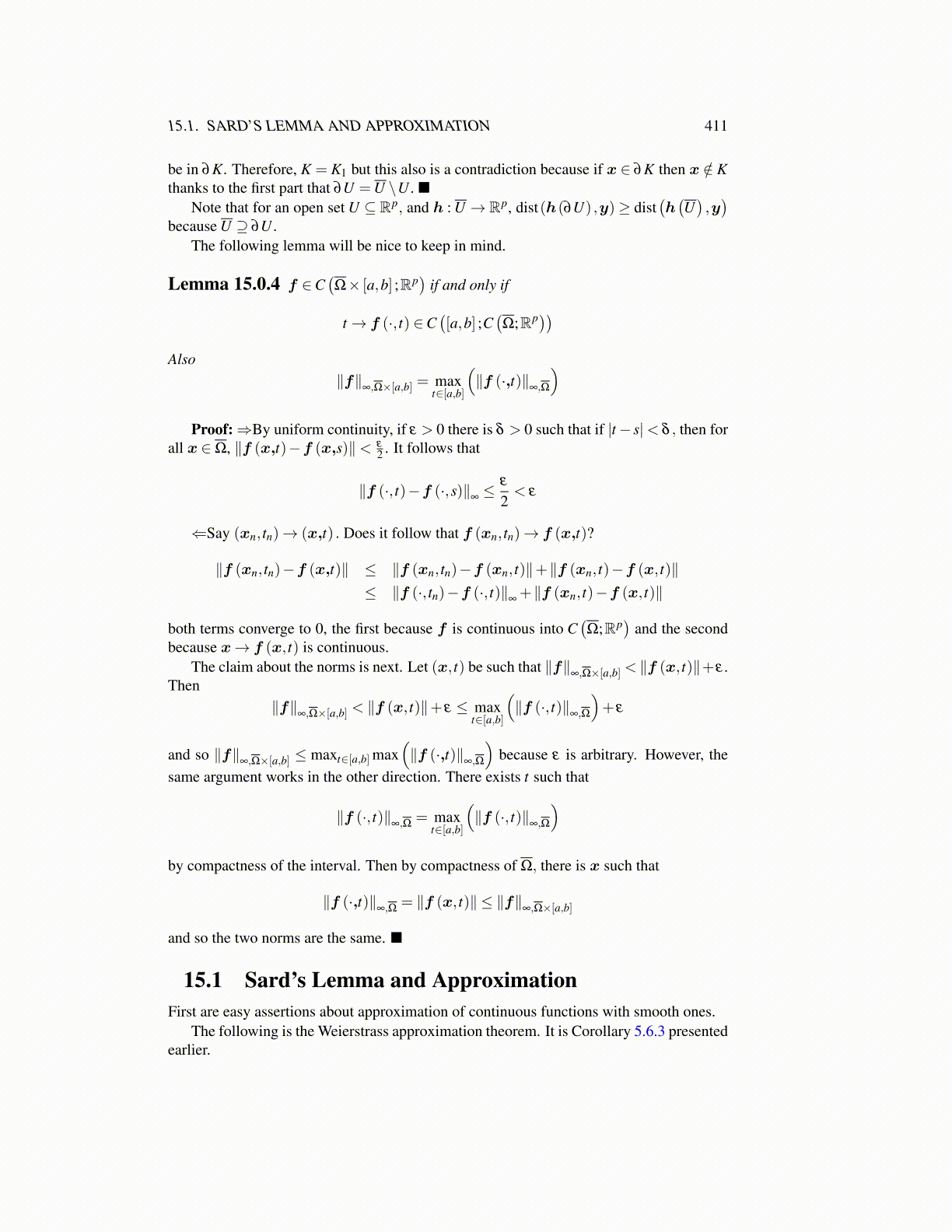
15.1. SARD’S LEMMA AND APPROXIMATION 411
be in ∂K. Therefore, K = K1 but this also is a contradiction because if x ∈ ∂K then x /∈ Kthanks to the first part that ∂U =U \U . ■
Note that for an open set U ⊆ Rp, and h : U → Rp, dist(h(∂U) ,y)≥ dist(h(U),y)
because U ⊇ ∂U .The following lemma will be nice to keep in mind.
Lemma 15.0.4 f ∈C(Ω× [a,b] ;Rp
)if and only if
t→ f (·, t) ∈C([a,b] ;C
(Ω;Rp))
Also∥f∥
∞,Ω×[a,b] = maxt∈[a,b]
(∥f (·,t)∥
∞,Ω
)Proof:⇒By uniform continuity, if ε > 0 there is δ > 0 such that if |t− s|< δ , then for
all x ∈Ω, ∥f (x,t)−f (x,s)∥< ε
2 . It follows that
∥f (·, t)−f (·,s)∥∞≤ ε
2< ε
⇐Say (xn, tn)→ (x,t) . Does it follow that f (xn, tn)→ f (x,t)?
∥f (xn, tn)−f (x,t)∥ ≤ ∥f (xn, tn)−f (xn, t)∥+∥f (xn, t)−f (x, t)∥≤ ∥f (·, tn)−f (·, t)∥∞
+∥f (xn, t)−f (x, t)∥
both terms converge to 0, the first because f is continuous into C(Ω;Rp
)and the second
because x→ f (x, t) is continuous.The claim about the norms is next. Let (x, t) be such that ∥f∥
∞,Ω×[a,b] < ∥f (x, t)∥+ε .Then
∥f∥∞,Ω×[a,b] < ∥f (x, t)∥+ ε ≤ max
t∈[a,b]
(∥f (·, t)∥
∞,Ω
)+ ε
and so ∥f∥∞,Ω×[a,b] ≤ maxt∈[a,b] max
(∥f (·,t)∥
∞,Ω
)because ε is arbitrary. However, the
same argument works in the other direction. There exists t such that
∥f (·, t)∥∞,Ω = max
t∈[a,b]
(∥f (·, t)∥
∞,Ω
)by compactness of the interval. Then by compactness of Ω, there is x such that
∥f (·,t)∥∞,Ω = ∥f (x, t)∥ ≤ ∥f∥
∞,Ω×[a,b]
and so the two norms are the same. ■
15.1 Sard’s Lemma and ApproximationFirst are easy assertions about approximation of continuous functions with smooth ones.
The following is the Weierstrass approximation theorem. It is Corollary 5.6.3 presentedearlier.